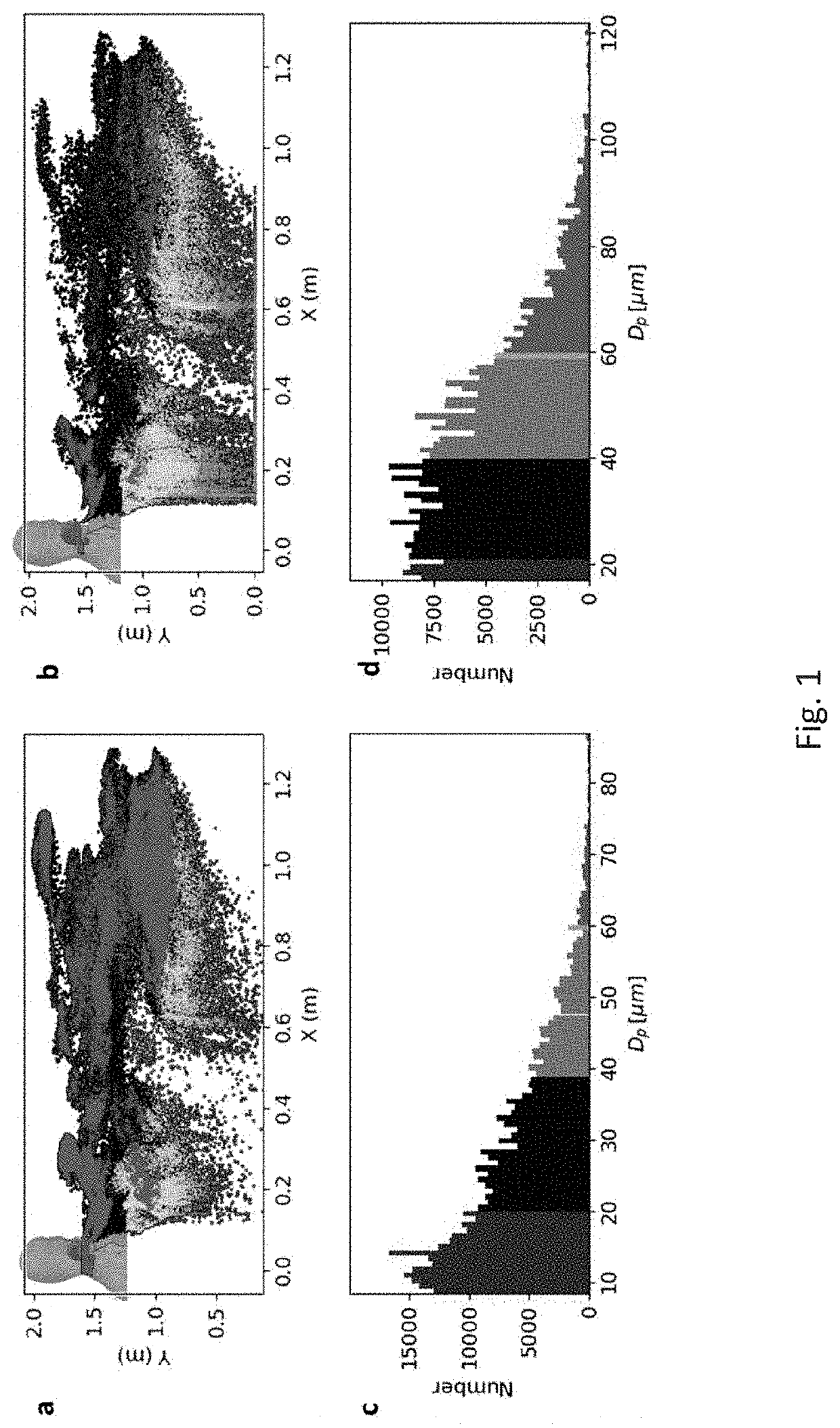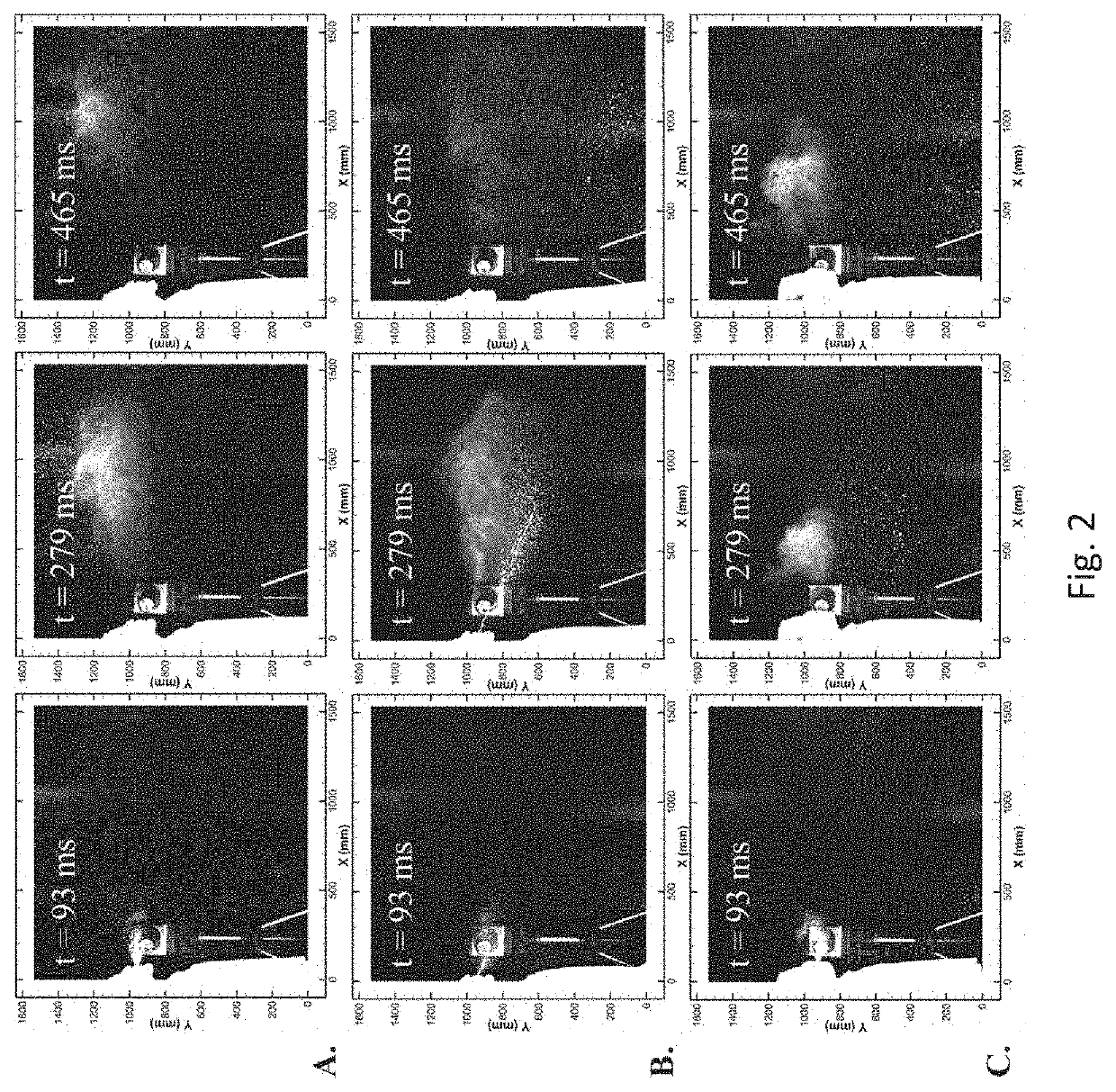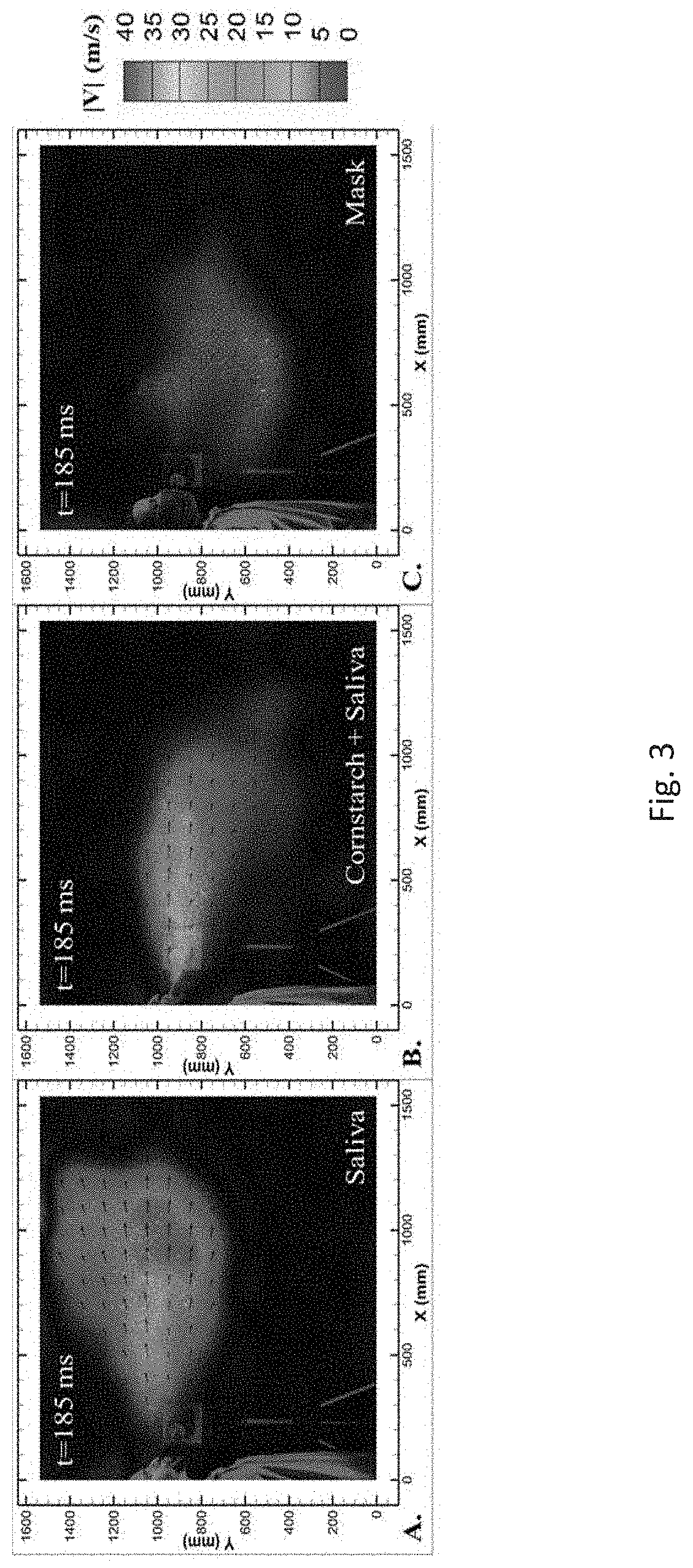Composition and method to prevent pathogen transmission through altering saliva
a technology of saliva droplets and pathogens, applied in the field of saliva droplets, can solve the problems of large droplets falling quickly toward the ground surface, large-scale infections, death, etc., and achieve the effects of reducing saliva production, and reducing the transmission of airborne pathogens
- Summary
- Abstract
- Description
- Claims
- Application Information
AI Technical Summary
Benefits of technology
Problems solved by technology
Method used
Image
Examples
##ic example 1
Prophetic Example 1
[0056]A 40-year-old patient presents with mucoid congestion of the nasal passage, as well as a cough. The patient experiences coughing and sneezing events resulting in the ejection of mucous particles from the patient's nose and mouth into the surrounding area. The patient does not wear a face covering during the coughing and sneezing events, leaving the patient's nose and mouth exposed to the surrounding area. The coughing and sneezing events result in aerosolized droplets into the surrounding area. The patient receives and consumes a composition includes 30% (w / w) of a thickening agent, 25% (w / w) of a saliva-reduction agent, and 45% (w / w) of a bonding agent. After consuming the composition, the patient experiences a reduction in the production of saliva, as well as an increase in a density of the saliva that is produced. Upon a subsequent coughing event and a subsequent sneezing event, after consuming the composition, the patient expels saliva droplets into the ...
##ic example 2
Prophetic Example 2
[0057]A 40-year-old patient presents with no mucoid congestion and experiences infrequent coughing and sneezing events in the recent history of the patient. The patient does not wear a face covering during the coughing and sneezing events, leaving the patient's nose and mouth exposed to the surrounding area. The patient receives and consumes a composition includes 30% (w / w) of a thickening agent, 25% (w / w) of a saliva-reduction agent, and 45% (w / w) of a bonding agent. After consuming the composition, the patient experiences a reduction in the production of saliva, as well as an increase in a density of the saliva that is produced. Upon a subsequent coughing event and a subsequent sneezing event, after consuming the composition, the patient expels saliva droplets into the surrounding area that include a weight greater than the aerosolized droplets pre-consumption. The heavier saliva droplets fall to a ground surface at an increased rate of acceleration as compared ...
##ic example 3
Prophetic Example 3
[0058]A 40-year-old patient presents with mucoid congestion of the nasal passage, as well as a cough. The patient experiences coughing and sneezing events resulting in the ejection of mucous particles from the patient's nose and mouth into the surrounding area. The patient wears a face covering during the coughing and sneezing events, such that the patient's nose and mouth are covered during the coughing and sneezing events. The coughing and sneezing events result in aerosolized droplets into the surrounding area, which are concentrating in the area immediately surrounding the patient due to the face covering. The patient receives and consumes a composition includes 30% (w / w) of a thickening agent, 25% (w / w) of a saliva-reduction agent, and 45% (w / w) of a bonding agent. After consuming the composition, the patient experiences a reduction in the production of saliva, as well as an increase in a density of the saliva that is produced. Upon a subsequent coughing even...
PUM
| Property | Measurement | Unit |
|---|---|---|
| w/w | aaaaa | aaaaa |
| w/w | aaaaa | aaaaa |
| w/w | aaaaa | aaaaa |
Abstract
Description
Claims
Application Information
 Login to View More
Login to View More - Generate Ideas
- Intellectual Property
- Life Sciences
- Materials
- Tech Scout
- Unparalleled Data Quality
- Higher Quality Content
- 60% Fewer Hallucinations
Browse by: Latest US Patents, China's latest patents, Technical Efficacy Thesaurus, Application Domain, Technology Topic, Popular Technical Reports.
© 2025 PatSnap. All rights reserved.Legal|Privacy policy|Modern Slavery Act Transparency Statement|Sitemap|About US| Contact US: help@patsnap.com



